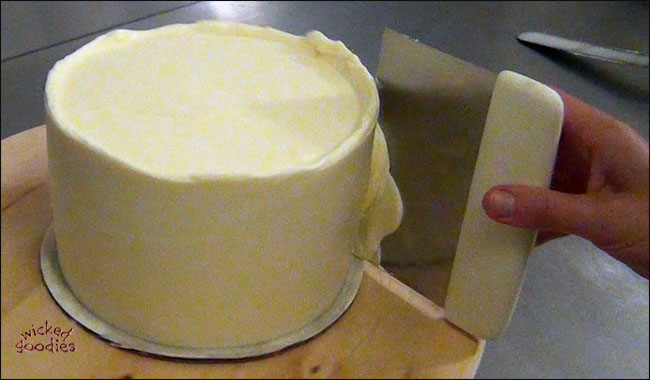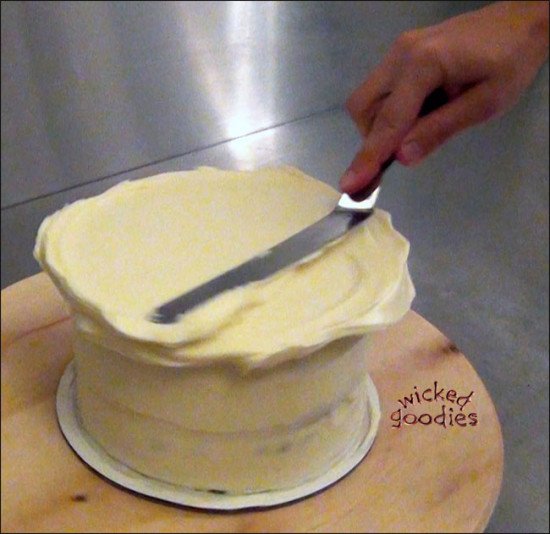Cake Frosting Basics
page 26 of 50
The Final Coat
The trick to final-coating is to add more buttercream than you actually need onto the cake. Make sure that all the gaps and divots are just slightly over-filled and that each edge and corner is extra fortified with buttercream.

A few strokes with a bench scraper will reveal any places on the side of the cake that are thin or uneven. The bench scraper can also be used like a spatula to work the frosting around at this stage. It is the best tool for frosting the sides of cakes.
When frosting the sides of a cake, be sure to bend down and look at the cake from eye level now and then. You can’t see it when you’re standing over the cake but when you bend down, you will notice if the sides are vertical or not. It is very common when first starting out to end up with a cake that is either tapered in or tapered out at the top. Bending down to make sure the sides are straight will help alleviate this issue.
Using tools like a straight edge or ruler now and then can also help keep your bearings straight.
page 26 of 50





If the cakeboard is supposed to be the same size as the cake, where will the final coat of frosting sit?
The final coat of frosting should ideally cover the board so that it does not show in the end.